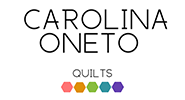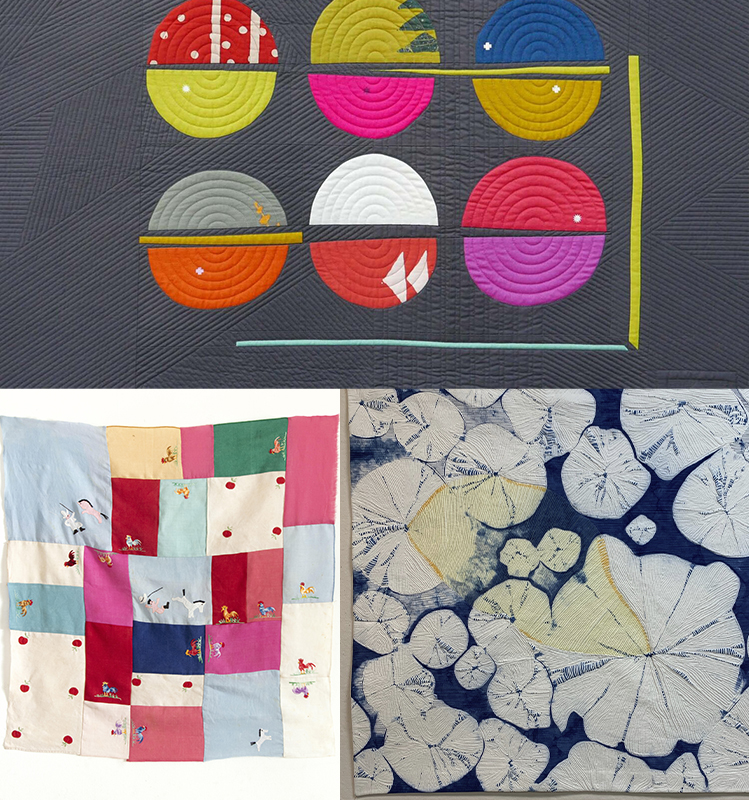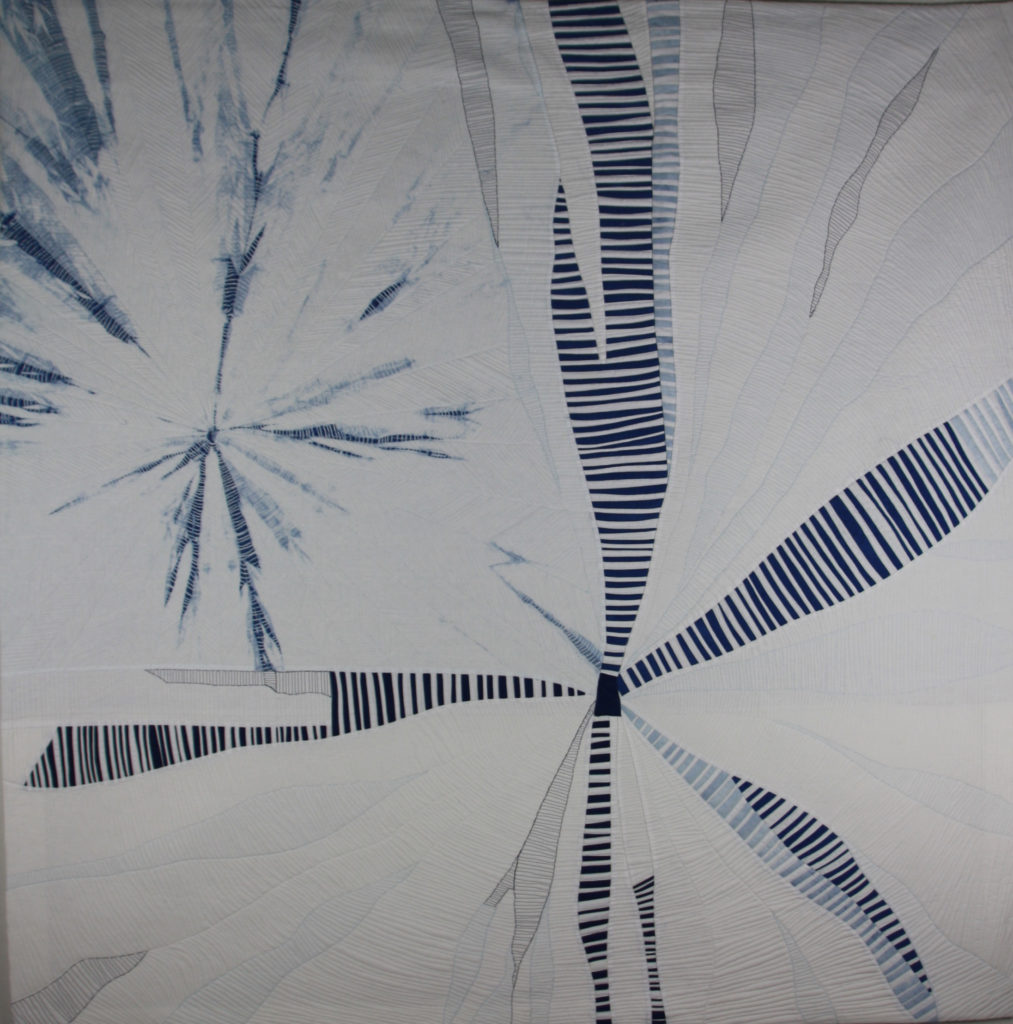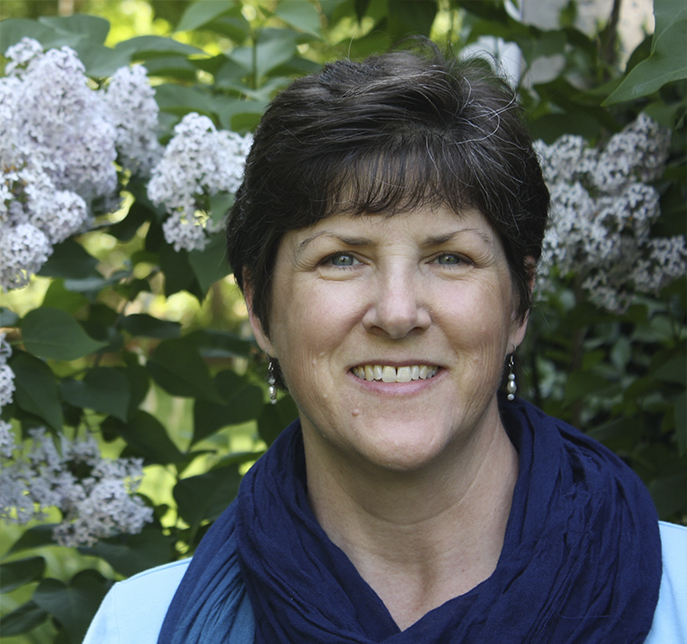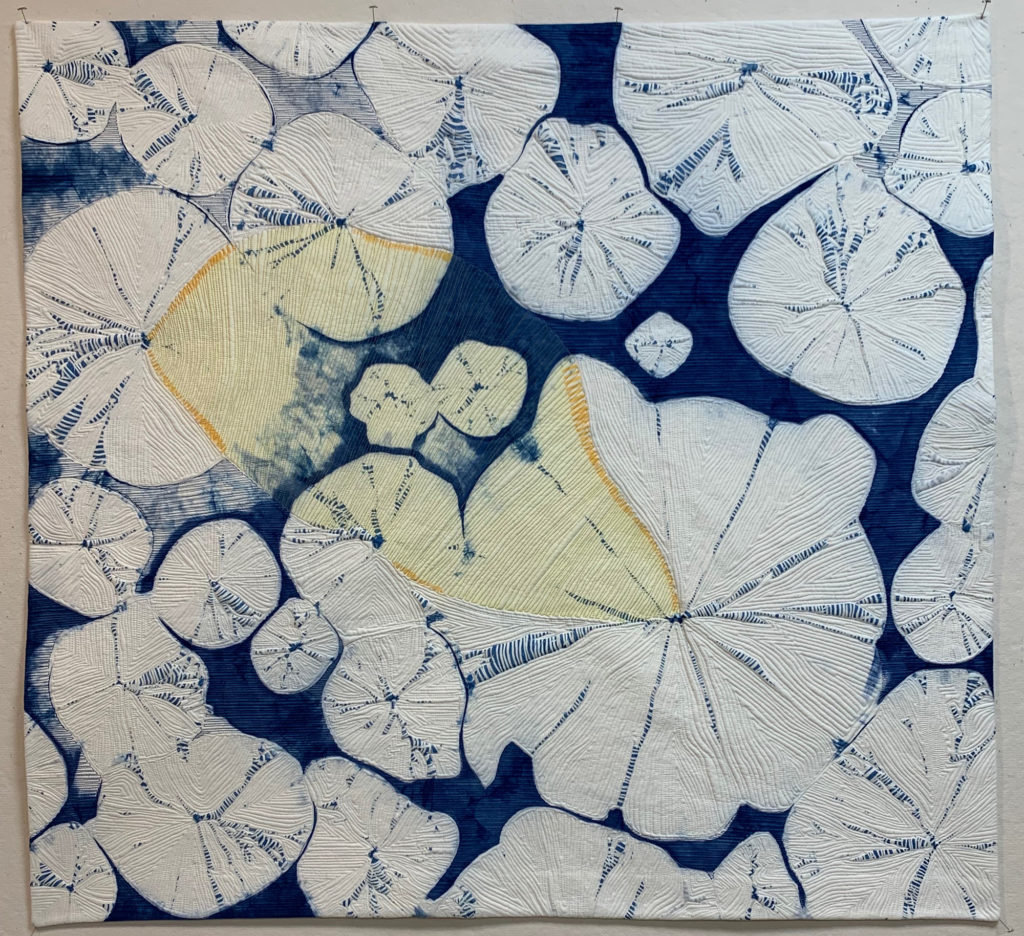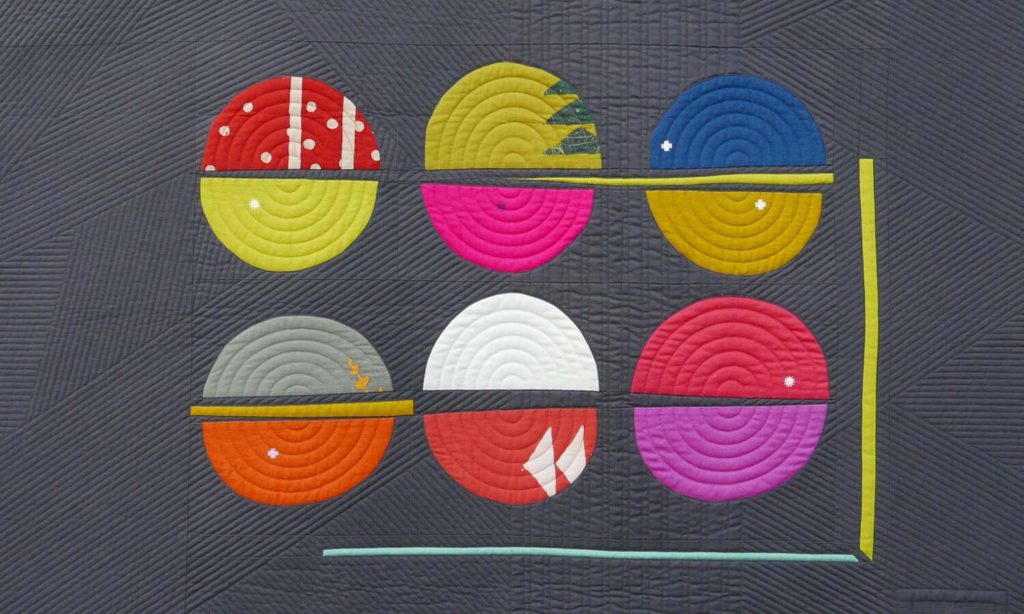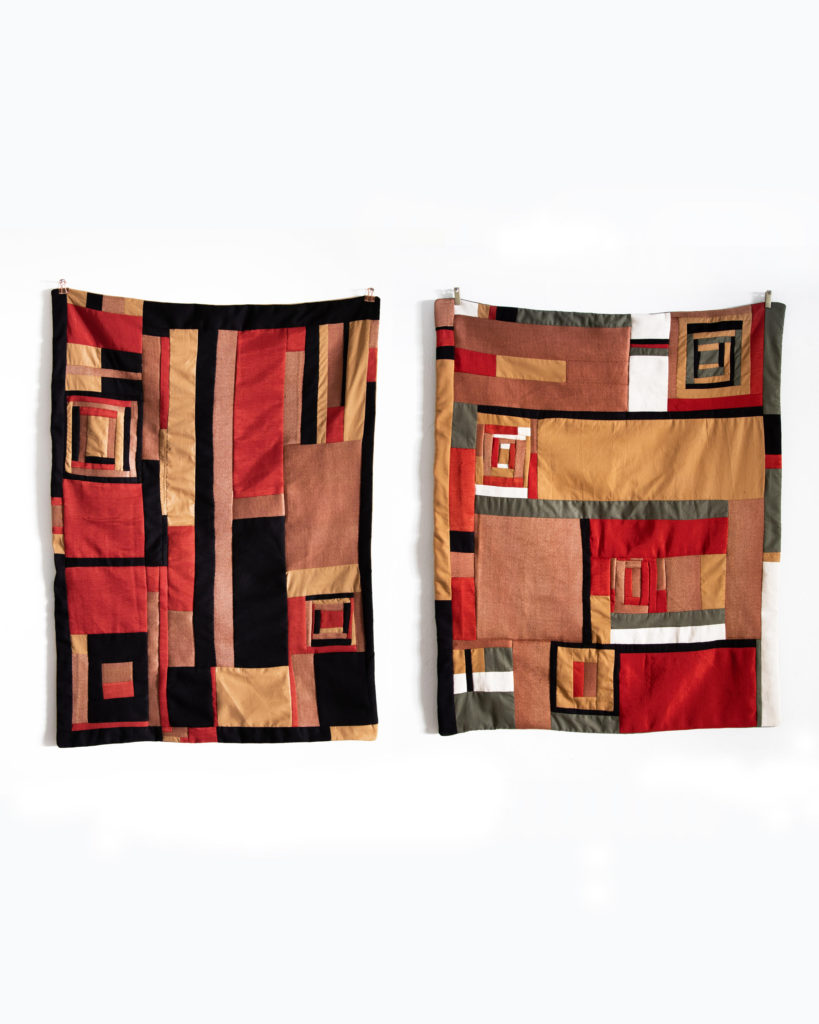In this new showcase I’m featuring four Modern Quilters that you will love!
Sue Cortese
I started quilting in 1995. Like most quilters, I started off making traditional quilts. However, I always tried to put a personal spin on the pattern. Occasionally drawing my own pattern.
Learning to hand dye fabric, early on, helped distinguish my quilts from the pack. In 1996, I was asked to be part of an organizing committee for a quilt show from several guilds. I have been an active member of the quilting community since; belonging to different “bees”, guilds, and organizations; attending, and organizing retreats; organizing, taking, and teaching classes; working in a quilt shop; selling my hand-dyed fabrics; organizing, and judging quilt shows.
In 2010, I took a class on improvisational piecing with Nancy Crow. From then on, I stopped following patterns and starting designs for myself. While I may have an idea of what I want to portray or say, all the design work is done on the design wall. My process starts with dyeing my own fabrics, allowing me to create a wide variety of colors and patterns for my own palette. I use improvisational piecing to build my artwork, letting it dictate my direction. The constructed piece isn’t always what I had imaged, and that is ok. After I am finished constructing a piece, I typically machine quilt my work on my Gammill long arm. Some pieces are hand quilted. Either way, I use my quilting stitches to connect the layers as well as adding line, texture which
support the constructed/printed design.
About two years ago, I have started working with indigo and shibori. Indigo is a natural dye that is well known around the world. Shibori is a Japanese style of dyeing which using pressure as a resist, keeping dye from getting to the fabric. The two work together beautifully. I have tried many of different shibori techniques creating yards, and yards of textured fabrics. As far as introducing these fabrics into my work, it is still in an early developmental stage. I have made some pieces as whole cloth work; they are bound, dyed, and then hand quilted. Some pieces are bound, dyed, and incorporated into a piece with improvisational piecing, and machine quilting. I am also working on a piece that incorporates the indigo shibori fabric with appliqué.
Limiting myself to one set style has always been problematic for me… so I continue to explore!
As far as inspirations, colors, and design elements that I tend to be drawn to… Nature is my first inspiration. I am drawn to water and the outdoors. I have my morning coffee on the back porch listening to the squirrel scurry around, the birds chirping and the trickle of water from the nearby pond. I am excited to hear the owl that lives in the woods near the house, or to see deer in the backyard. So naturally greens and blues tend to find there way into my work, as do natural line and curved forms.
I also find quilting is a way to express myself, trying to use shapes and colors to show emotions. Quilting as therapy! I find the need to explore a wider variety of color and shape than to just my preferences, as colors, and shapes elicit different emotional responses in us. So, I am trying to learn how to use elements to elicit the same emotional response in viewers to what I am feeling. If you will, correctly expressing myself in pictorial form.
Sarah Hibbert
I have been quilting for over 30 years and I am so enjoying the style I am now creating. I am purely a part time quilter using my kitchen table as my studio and the floor as my design wall. From the beginning I mainly reconstructed traditional patterns and made a twist in the color combinations, placing a block the wrong way or carrying a piece into the border. I love this combination of old and new; of the traditional and contemporary; patterns passed down through the generations and my personal contribution bringing something new. My choice of fabric is mainly linen, I love the feel of this once it has been quilted and the subtle shades of color. It lends itself very much to hand quilting, softening whilst stitching.
My main go to fabric color is indigo blue, either commercially dyed or if I am lucky enough to find, hand dyed. I enjoy matching this with a bright spark of color to lift the palette. For several years, I have created a paper collage which I use as a basis for a quilt design. On a number of these collage quilts I have been lucky enough to have the beautiful quilting services of Christine Perrigo @ccpquilt. Her magic really does lift the design. When creating a quilt, I have a brief outline in my head of the design, but I very much let the idea evolve as I am creating, sometimes it is completely different from the initial format. I so enjoy where the fabric and ideas take me. I bounce between machine quilting in straight lines or densely hand quilted pieces, I try to have a couple of projects on hand to suit my mood.

The turning point in my quilting journey was visiting Quilton in Savannah in 2017, it opened my eyes to the freedom and impact of design, taking an idea to an art level. I will always be thankful for that experience and very much enjoy the friendships I have made during those exhibitions.
Elisa Maciel
I am Elisa Maciel at ZOCA. A textile artist and photographer from Brazil. ZOCA started as a small page on Instagram to promote some embroidered bags I was making in 2018. During the pandemic and, consequently, with the very few jobs I was having as a photographer, I reassumed ZOCA and started creating patchworks from leftover fabrics, scraps, old curtains and thrift store clothes.

I accumulated a lot of textile material during the years I was learning to sew at @cafecostura and when I studied Fashion Design. During my college years, I started to raise questions about the fashion industry and its harmful processes to society and the environment. The awakening to these issues involving the fashion system led me to have a work ethic that consists of trying to create my art in the most sustainable way possible and with the least impact on the environment. With the new phase of ZOCA it was no different: I started to create these patchworks with textile surplus from other creative projects and, as the brand grew and my fabrics ran out, I started to search for scraps in thrift stores, online projects/stores that sell fabric leftovers from the textile industry and in the family’s closets – where I always find an old curtain, sheet and napkin or a forgotten piece of clothing.
As I only work with what I have available of thrifted fabrics, I feel free to be inspired by the options I have at the moment. The creative process is quite intuitive and experimental. The choice of color palette is a lot of my own taste and others art pieces that inspire me. I hardly plan the design of the piece I’m going to create. I tend to go little by little sewing pieces of fabrics and understanding the patterns I would like to form – usually quite geometric – until I understand the moment of having finished a piece.
